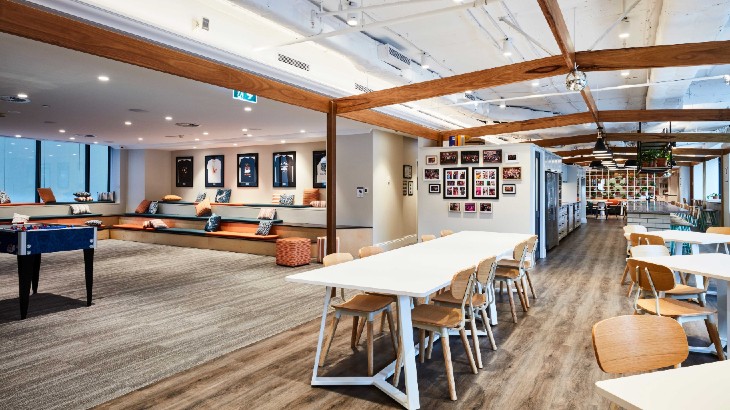The 1st quarter of 2020 brought about a radical shift in the way workplaces function, with close to 70% of the workforce switching to a Work-From-Home format almost overnight. While this led business owners to contemplate the need for office space, it also made everyone realise the importance of one-on-one interactions, and camaraderie, especially that of a deep-rooted sense of belongingness which has gone amiss during this difficult time.
Reimagining the Office Spaces
As the world is gearing up to return to the offices, the onus to create a space that helps maintain social distancing while still encouraging collaboration lies with the companies. Hence, an office redesign or modification is definitely on the cards for most businesses. In this regard, office neighbourhoods seem to tick all the right boxes! Let us see how.
What are Office Neighbourhoods?
Office neighbourhoods can be defined as areas within an office dedicated to specific functions or teams. While the open-concept floor plan does not sit well with COVID-19 guidelines, the traditional cube style doesn’t offer as much ease of collaboration as is required in the current scenario. Thankfully, office neighbourhoods offer the best of both worlds. While this concept may physically resemble an open concept floor plan, it functionally works towards organising people with similar or co-dependent work into small communities. Rather than making an employee feel that they are chained to a desk, it opens them up to the new possibility of becoming an integral part of a group that strives to achieve a common goal.
One of the most satisfying aspects of Office Neighbourhoods is that it allows for physical distancing while letting people work in an environment that is conducive to their need for being socially involved. Besides, these neighbourhoods facilitate the creation of flexible activity-focused zones for people to move around and work in.

How to Incorporate Office Neighbourhoods?
As with every change, creating office neighbourhoods also require diligent planning and staggered implementation by companies. Here are some of the ways that will help you bring about these changes in a conducive and efficient manner.
Chart Movements
Consider the physical movement of each employee of each department and the need for collaborative and quiet places in and around each work zone. Also, identify the need for collaboration and for working distinctly based on hierarchy and in accordance with the different stages of a project/ assignment. In consultation with stakeholders and identified changemakers/employees, rethink the space allocation for each business function.
Use of Community Oriented Solutions
While creating office neighbourhoods, emphasise on activity-based environments that help employees enjoy the much-needed sense of community, which not only encourages them to collaborate but also assures their emotional wellbeing.
Make the Most of Technology
Modern-day tools like office planning software can help determine an ideal office design, while also ensuring that the employees learn all about the layout upfront and thereby enjoy a smooth transition.
Communicate Openly
For a change to be embraced wholeheartedly, it is essential for each employee to know and understand the reason behind such change. Here open communication is the key.

While office neighbourhoods were gaining traction pre -COVID-19, its adoption will certainly see greater acceleration as it can help make the post-COVID office much more welcoming and accommodating for employees, while also focusing on their well-being and keeping them connected to the larger community.
